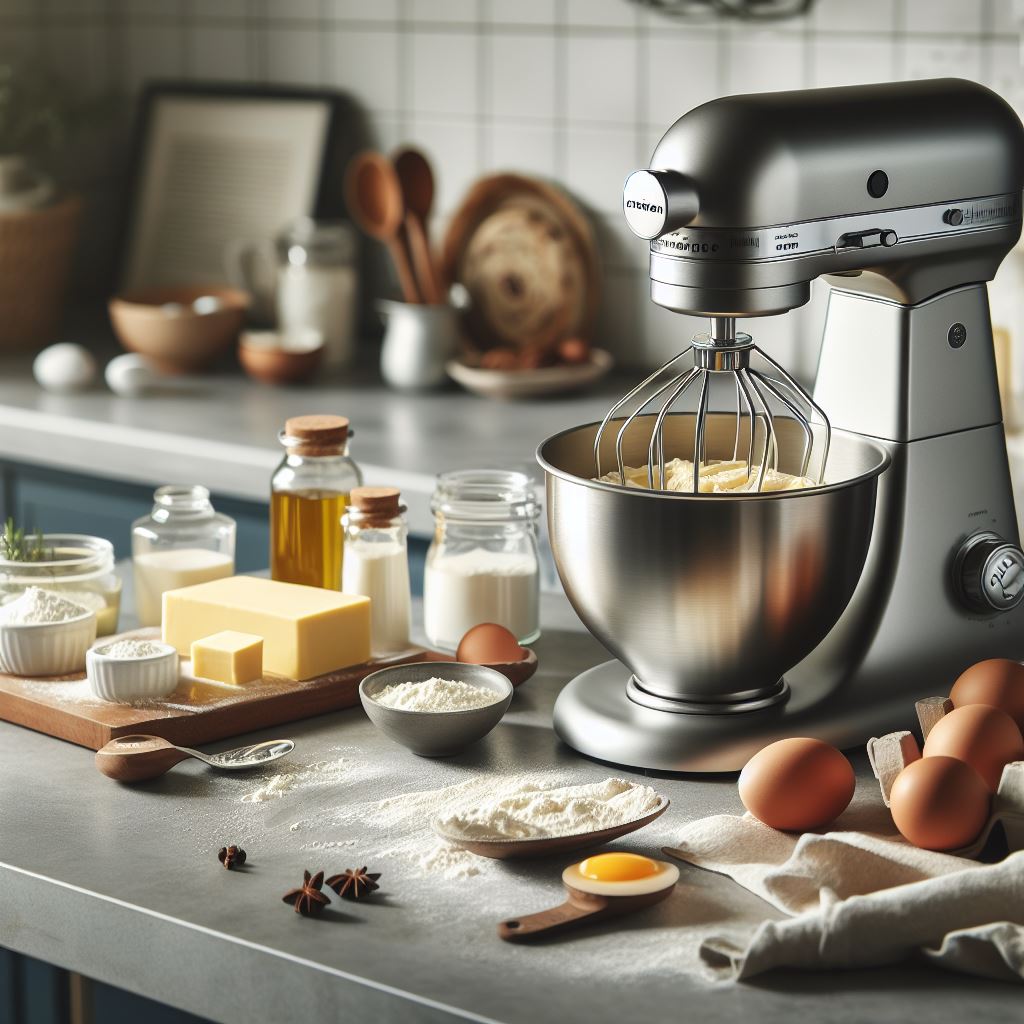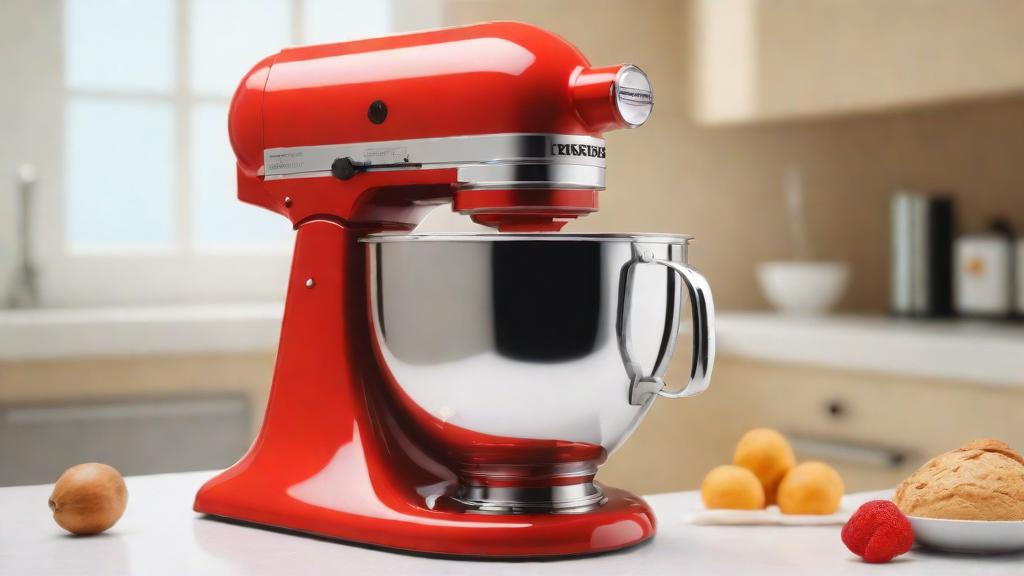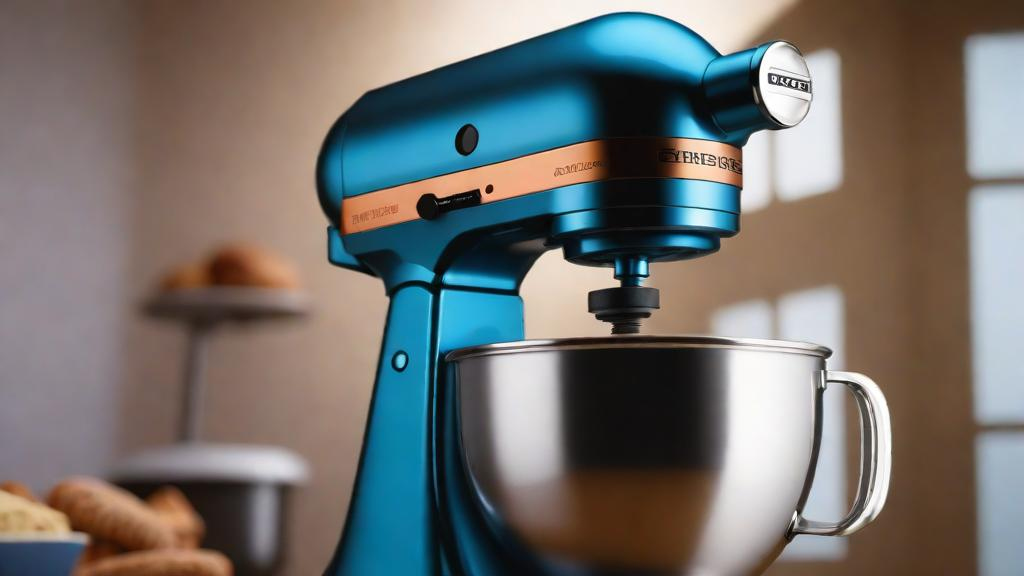The Role of MLCC in Stand Mixer

Multilayer Ceramic Capacitors (MLCCs) play a crucial role in the functionality and performance of stand mixers. These electronic components are essential for the proper operation of various systems within the mixer, including motor control, speed regulation, and safety mechanisms. Here are some key applications of MLCCs in stand mixer features:

MLCC Applications in Stand Mixer Features
Motor Control: MLCC is used in the motor control circuitry of stand mixers to regulate the speed and power output of the motor. They help stabilize voltage levels and ensure precise control over the mixing speed, allowing users to achieve the desired mixing consistency.
Speed Regulation: Stand mixers often feature multiple speed settings to accommodate different mixing tasks. MLCCs are used to regulate the voltage and current levels in the speed control circuitry, ensuring consistent and reliable performance across all speed settings.
Overload Protection: MLCCs are used in the overload protection circuitry of stand mixers to prevent damage to the motor and other components in case of excessive load or voltage spikes. They help absorb and dissipate excess energy, protecting the mixer’s electronic systems from harm.
Safety Mechanisms: Stand mixers may incorporate safety mechanisms such as short-circuit protection and overvoltage protection. MLCCs are used in these circuits to ensure reliable and fast-acting protection against electrical faults, ensuring user safety during operation.
Timer and Display Circuitry: Some stand mixers feature timers and digital displays for user convenience. MLCCs are used in the timer and display circuitry to stabilize voltage levels and ensure accurate timing and display functions.
LED Lighting: Stand mixers with LED lighting use MLCCs in the lighting circuitry to regulate the voltage and current supplied to the LEDs. This ensures consistent and reliable lighting performance, enhancing the mixer’s aesthetics and functionality.
Control Panel Circuitry: The control panel of stand mixers contains various buttons and switches for user interaction. MLCCs are used in the control panel circuitry to debounce switches, filter out noise, and ensure reliable operation of the control interface.
MLCC Specifications for Stand Mixers
When selecting Multilayer Ceramic Capacitors (MLCCs) for stand mixer applications, several key specifications should be considered to ensure optimal performance and reliability. Here are the important MLCC specifications for stand mixers:
Capacitance (C): The capacitance of an MLCC determines its ability to store and release electrical energy. For stand mixers, the capacitance rating should be chosen based on the specific requirements of the mixer’s motor control and speed regulation circuits. Capacitance values typically range from a few nanofarads (nF) to several microfarads (µF).
Voltage Rating (V): The voltage rating of an MLCC indicates the maximum voltage that the capacitor can safely handle. It’s important to select an MLCC with a voltage rating that exceeds the maximum voltage expected in the mixer’s circuitry to prevent voltage breakdown and capacitor failure.
Temperature Stability: Stand mixers can operate in a range of temperatures, so MLCCs with good temperature stability are essential. X7R and X5R dielectric types are commonly used in stand mixers due to their stable capacitance over a wide temperature range.
Size (Dimensions): MLCCs are available in various sizes, and the physical dimensions of the capacitor should be considered to ensure it fits within the space constraints of the stand mixer’s design. Smaller capacitors are often preferred for compact mixer designs.
ESR (Equivalent Series Resistance): The ESR of an MLCC affects its efficiency and performance in high-frequency applications. Lower ESR values are desirable for stand mixers to minimize power losses and ensure optimal motor performance.
Lifetime and Reliability: MLCCs with a high lifetime expectancy and reliability rating are preferred for stand mixer applications to ensure long-term performance and minimal maintenance requirements.
Noise Reduction: Some MLCCs are designed to reduce electromagnetic interference (EMI) and noise in electronic circuits. For stand mixers, selecting MLCCs with noise reduction capabilities can help improve the overall performance and efficiency of the mixer’s electronic systems.
MLCC Reliability in Stand Mixers
Multilayer Ceramic Capacitors (MLCCs) are known for their reliability and durability, making them ideal components for use in stand mixers. These capacitors are designed to withstand the rigors of daily use in high-vibration and high-temperature environments, ensuring the long-term performance and reliability of the mixer’s electronic systems.
Vibration Resistance: Stand mixers are subject to significant vibration during operation, which can impact the performance of electronic components. MLCCs are specifically designed to withstand vibration, ensuring they remain securely in place and continue to function properly over time.
Temperature Stability: MLCCs used in stand mixers are designed to operate effectively at high temperatures. They are often made with materials that can withstand the heat generated during mixing, ensuring they maintain their capacitance and performance even in demanding thermal environments.
Longevity: MLCCs are known for their long lifespan, providing years of reliable service in stand mixers. Their durable construction and stable electrical properties ensure they can withstand the demands of frequent use without degradation or failure.
Performance Consistency: MLCCs offer consistent performance over their lifespan, providing reliable capacitance and voltage stability throughout the mixer’s use. This ensures the mixer operates consistently and efficiently, delivering optimal mixing results each time.
Quality Assurance: Manufacturers of MLCCs adhere to strict quality assurance processes to ensure the reliability and performance of their products. This includes testing for durability, temperature stability, and vibration resistance, among other factors, to ensure the capacitors meet the rigorous demands of stand mixer applications.

MLCC Technology Advancements for Stand Mixers
Multilayer Ceramic Capacitors (MLCCs) have undergone significant technological advancements in recent years, leading to improvements in performance, size, and efficiency. These advancements have benefited stand mixer designs by offering more compact and reliable capacitor options. Here are some key MLCC technology advancements relevant to stand mixers:
Miniaturization: MLCCs have become smaller in size while maintaining or even increasing their capacitance values. This miniaturization allows for more compact and space-efficient stand mixer designs, enabling manufacturers to create sleeker and more portable models.
Higher Capacitance Values: Advances in MLCC technology have led to higher capacitance values in smaller package sizes. This allows for the use of fewer capacitors in stand mixer designs, reducing component count and simplifying the overall circuitry.
Improved Temperature Stability: New dielectric materials and manufacturing techniques have improved the temperature stability of MLCCs. This is especially beneficial for stand mixers, which may operate in a wide range of temperatures, ensuring consistent performance under varying environmental conditions.
Reduced ESR: MLCCs with lower Equivalent Series Resistance (ESR) are now available, which helps improve the efficiency and performance of stand mixer circuits. Lower ESR results in reduced power losses and improved power delivery to the mixer’s components.
Enhanced Reliability: Manufacturers have implemented stricter quality control measures and improved manufacturing processes to enhance the reliability of MLCCs. This ensures that the capacitors meet stringent performance standards and can withstand the demands of stand mixer applications.
Customization Options: Some manufacturers offer customizable MLCCs to meet the specific requirements of stand mixer designs. This includes options for different capacitance values, voltage ratings, and package sizes to suit the unique needs of each mixer model.
MLCC Testing and Quality Assurance for Stand Mixers
Multilayer Ceramic Capacitors (MLCCs) undergo rigorous testing and quality assurance processes to ensure they meet the performance and reliability requirements of stand mixer applications. These processes are designed to identify any defects or issues with the capacitors and ensure they perform as expected in the mixer’s electronic systems. Here are some common testing and quality assurance measures for MLCCs used in stand mixers:
Visual Inspection: MLCCs undergo visual inspection to check for any physical defects, such as cracks, chips, or irregularities in the ceramic body or electrode layers. This ensures the capacitors are free from visible defects that could affect their performance.
Capacitance Testing: MLCCs are tested to verify their capacitance values and ensure they meet the specified tolerance levels. This ensures the capacitors provide the required capacitance for proper operation of the mixer’s electronic circuits.
Voltage Testing: MLCCs are subjected to voltage testing to ensure they can handle the maximum voltage levels expected in the mixer’s circuitry. This testing helps identify any capacitors that may fail under high voltage conditions.
Temperature Testing: MLCCs are tested at various temperature levels to assess their temperature stability and ensure they perform consistently across a wide temperature range. This testing helps ensure the capacitors can withstand the temperature fluctuations experienced during mixer operation.
ESR Testing: MLCCs undergo ESR testing to measure their Equivalent Series Resistance and ensure it meets the specified limits. Lower ESR values are desirable for stand mixer applications as they reduce power losses and improve efficiency.
Reliability Testing: MLCCs undergo reliability testing to assess their long-term performance and durability. This testing helps ensure the capacitors can withstand the demands of stand mixer applications and provide reliable operation over time.
Quality Assurance: MLCC manufacturers implement strict quality assurance processes to ensure the capacitors meet the required standards and specifications. This includes adherence to industry standards, such as ISO 9001, and continuous improvement of manufacturing processes.
MLCC Maintenance Tips for Stand Mixers
Stand mixers are valuable kitchen appliances that can last for many years with proper care and maintenance. Here are some tips to help you maintain your stand mixer’s Multilayer Ceramic Capacitors (MLCCs) and ensure they continue to perform optimally:
Keep it clean: Regularly clean the exterior of your stand mixer with a damp cloth to remove dust, dirt, and food residue. Avoid using abrasive cleaners or soaking the mixer in water.
Inspect the power cord: Check the power cord for any signs of damage, such as fraying or exposed wires. If you notice any damage, stop using the mixer immediately and have it repaired by a qualified technician.
Store it properly: Store your stand mixer in a dry and cool place to prevent damage from humidity and temperature fluctuations. Avoid storing it near heat sources or in direct sunlight.
Use the right attachments: Use only the attachments and accessories that are designed for your stand mixer. Using incompatible attachments can damage the mixer and void the warranty.
Avoid overloading: Do not overload the mixer with ingredients beyond its capacity. This can strain the motor and other components, including the MLCCs, leading to premature wear and tear.
Use at the correct speed: Use the mixer at the recommended speed for the task at hand. Using a higher speed than necessary can strain the motor and other components.
Avoid prolonged use: Avoid using the mixer continuously for extended periods. Allow the mixer to rest between uses to prevent overheating and damage to the MLCCs and other components.
Follow the manufacturer’s instructions: Always follow the manufacturer’s instructions for proper use and maintenance of your stand mixer. This will help ensure its longevity and performance.
